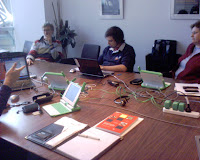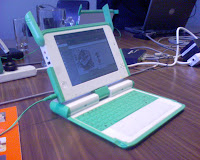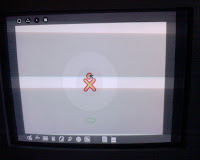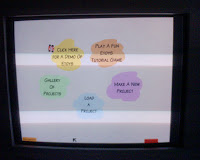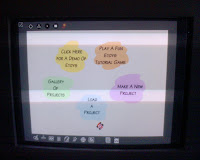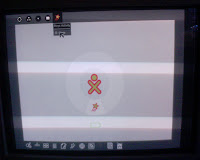Is this where Logo fell over?
In the 70's and 80's, Logo was put forward by its supporters as a silver bullet for education. It was enthusiastically promoted as an exceptionally good educational tool. Yet its mass introduction to schools was less successful, with a general perception that it had "not delivered what it promised".
It appeared to pass the test of enthusiastic teachers delivering to kids but fail where enthusiastic teachers delivered to rank and file teachers who in turn delivered to kids.
See Computer Criticism vs. Technocentric Thinking for an analysis by Papert on why it was perceived by some to have failed.
Is this the point we are at with the new drag&drop tools such as GameMaker? Over the past 4 years, a small group of teachers have recognised game making as a powerful constructivist tool for learning, a sandpit for higher order thinking. They persuaded their reluctant schools to let them teach game making.
Now its changing, game making is being adopted at school level and novice teachers are being told that they will "teach GameMaker". Unless the understanding is there that it is the journey and not the destination that matters, that it is a learning tool not a teaching tool, one for self-directed learning, then maybe its mass implementation will fall short of what we know it can deliver.
Will Game Maker fail the test of mass implementation like Logo did?
It appeared to pass the test of enthusiastic teachers delivering to kids but fail where enthusiastic teachers delivered to rank and file teachers who in turn delivered to kids.
See Computer Criticism vs. Technocentric Thinking for an analysis by Papert on why it was perceived by some to have failed.
Is this the point we are at with the new drag&drop tools such as GameMaker? Over the past 4 years, a small group of teachers have recognised game making as a powerful constructivist tool for learning, a sandpit for higher order thinking. They persuaded their reluctant schools to let them teach game making.
Now its changing, game making is being adopted at school level and novice teachers are being told that they will "teach GameMaker". Unless the understanding is there that it is the journey and not the destination that matters, that it is a learning tool not a teaching tool, one for self-directed learning, then maybe its mass implementation will fall short of what we know it can deliver.
Will Game Maker fail the test of mass implementation like Logo did?
Labels: constructivism, gamemaker

